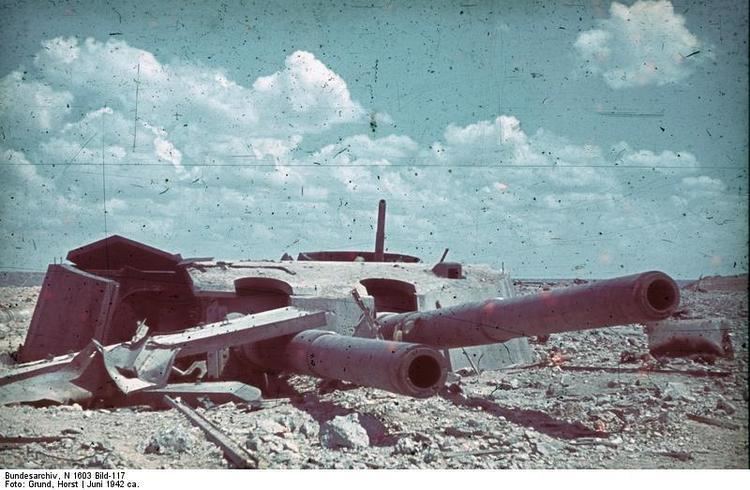 | ||
Similar Diorama, Siege of Sevastopol, Count's Jetty, Monument to the Sunken S, Cape Fiolent | ||
Maxim Gorky I and Maxim Gorky II (Russian designation: Coast Batteries #30 and #35) were coastal batteries used by the Soviet Union in the Crimea during World War II in the Crimean Campaign. Their namesake Maxim Gorky (a famous Soviet author and political activist), used in western sources (initially German ones), has no native origin.
Contents
Maxim Gorky I
Maxim Gorky I was located east of Ljabimorka, at 44.664°N 33.559°E / 44.664; 33.559 (north of Severnaya Bay which formed Sevastopol's harbor), and contained two twin gun turrets which could fire four 30.5 cm guns. Once the Germans had broken through the Perekop Isthmus in October 1941, they advanced on Sevastopol but were confronted by Maxim Gorky I. They deployed the 800mm rail gun Dora to destroy it. On June 6, 1942, heavy guns and mortars managed to make direct hits on the battery which destroyed one of the gun turrets and damaged the other. None of these were successful in eliminating the Maxim Gorky I, however, and it was not until June 17 that it was put out of action by German assault engineers. According to the Soviets, the batteries guns ran out of ammunition, firing was forced to cease, and the fortification was subsequently blown up by the crew.
Maxim Gorky II
Maxim Gorky II was located on the southwestern end of the peninsula (44.559°N 33.407°E / 44.559; 33.407) where Sevastopol stood and had turrets similar to Maxim Gorky I's. On July 4, Maxim Gorky II was taken after the Sapun positions were captured, making it the last major pre-war fortification to take part in a campaign.
Modern status
The 35th Battery (Maxim Gorky II) was repaired and made into a museum complex commemorating the sacrifice of its defenders. Funding was acquired via charity, primarily from Aleksei Chaly.
